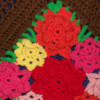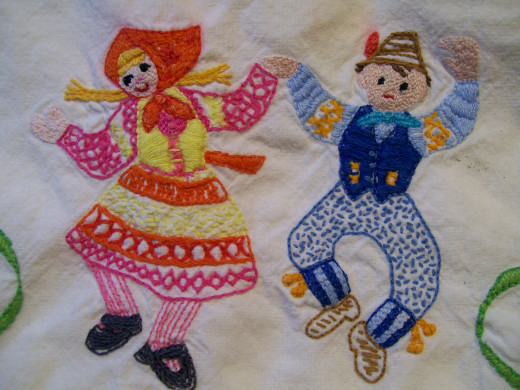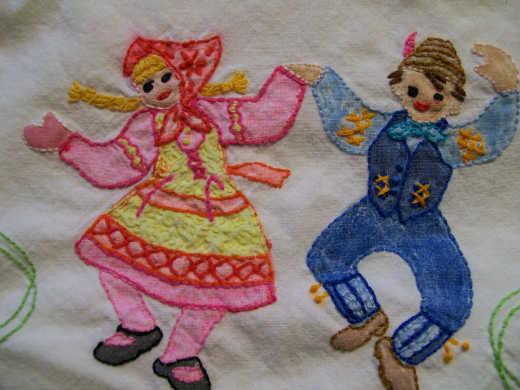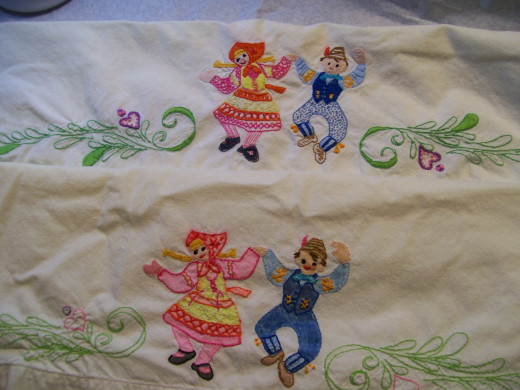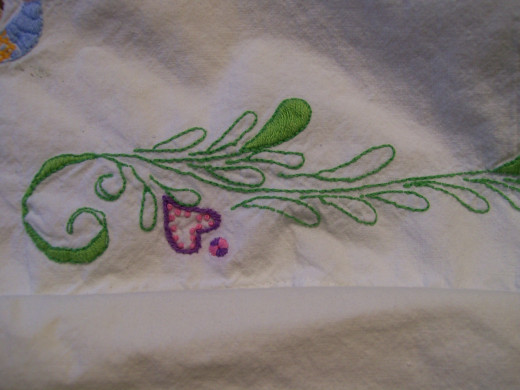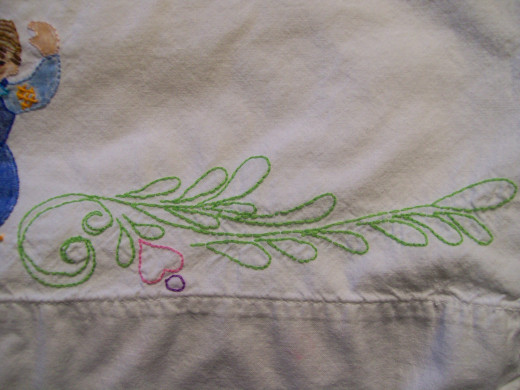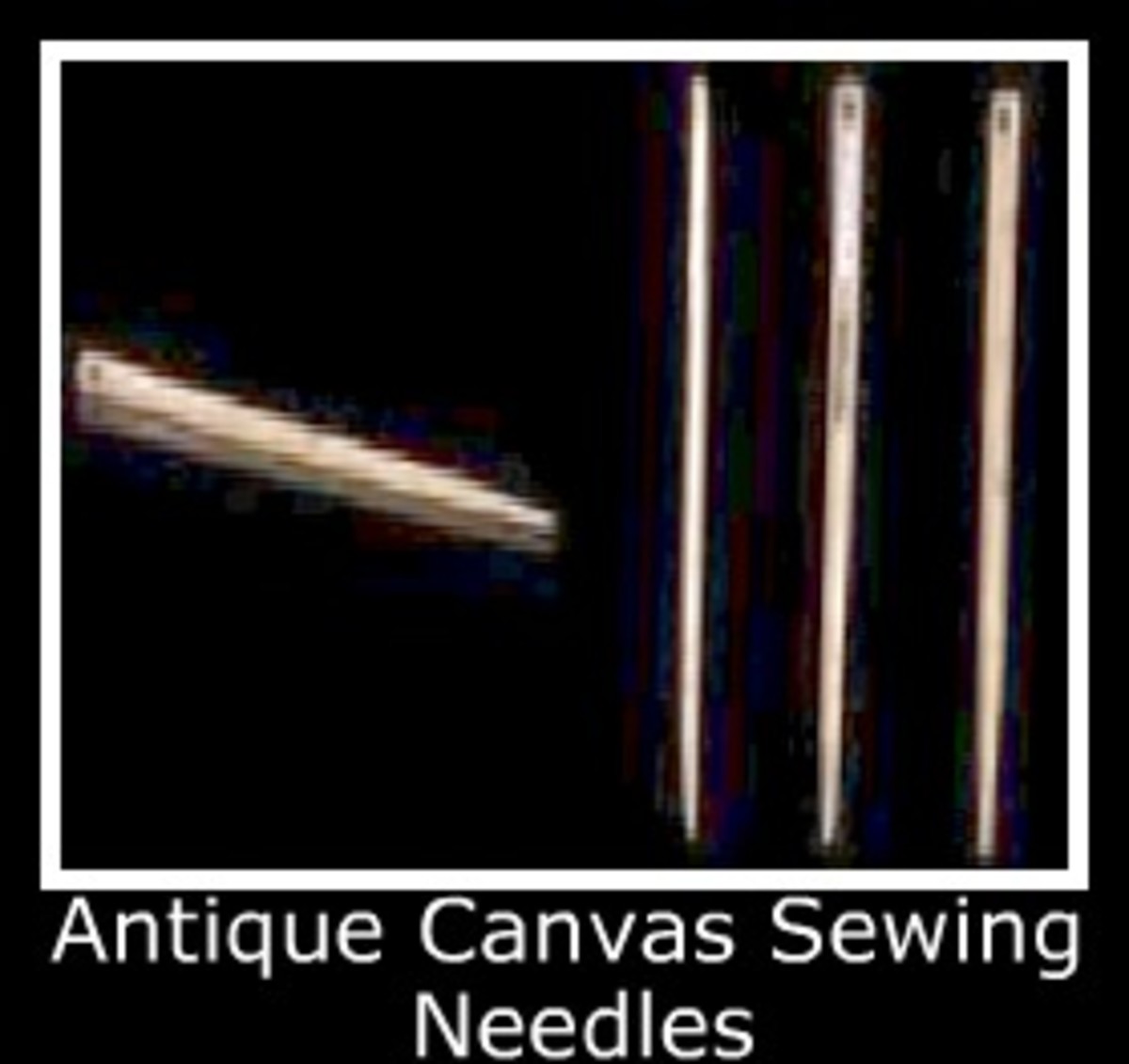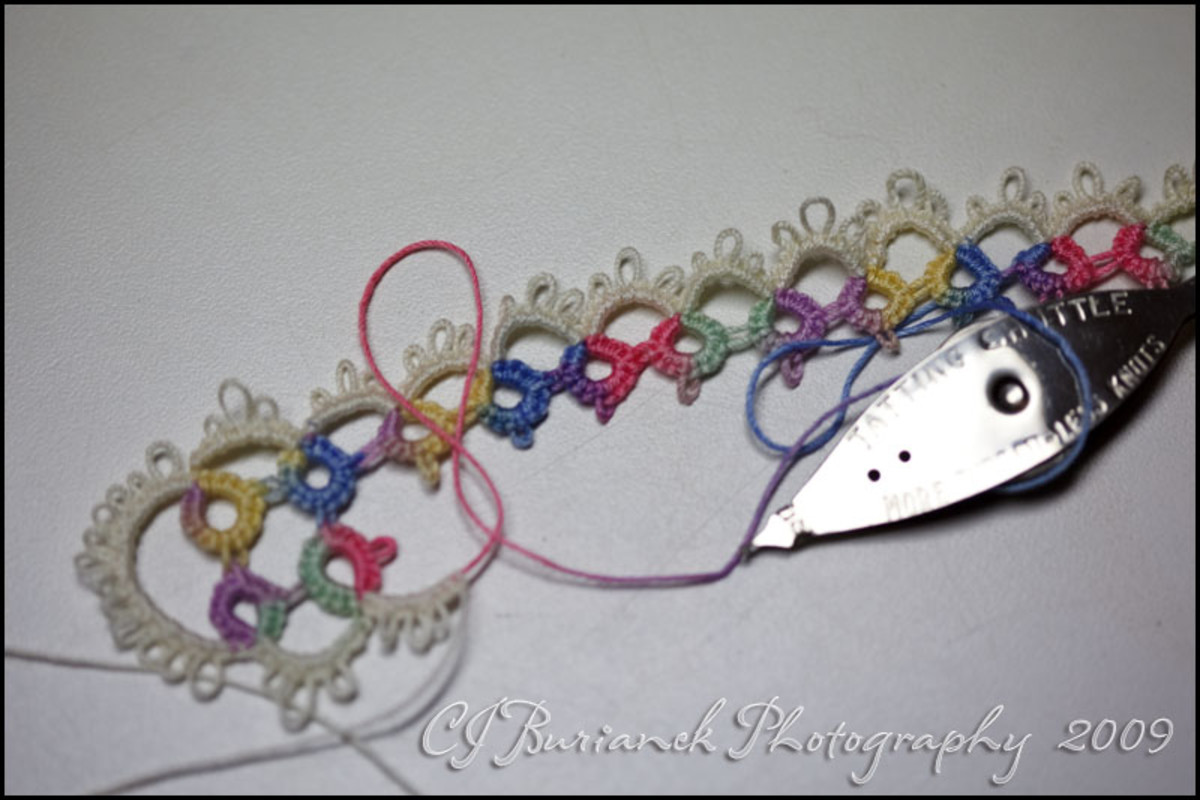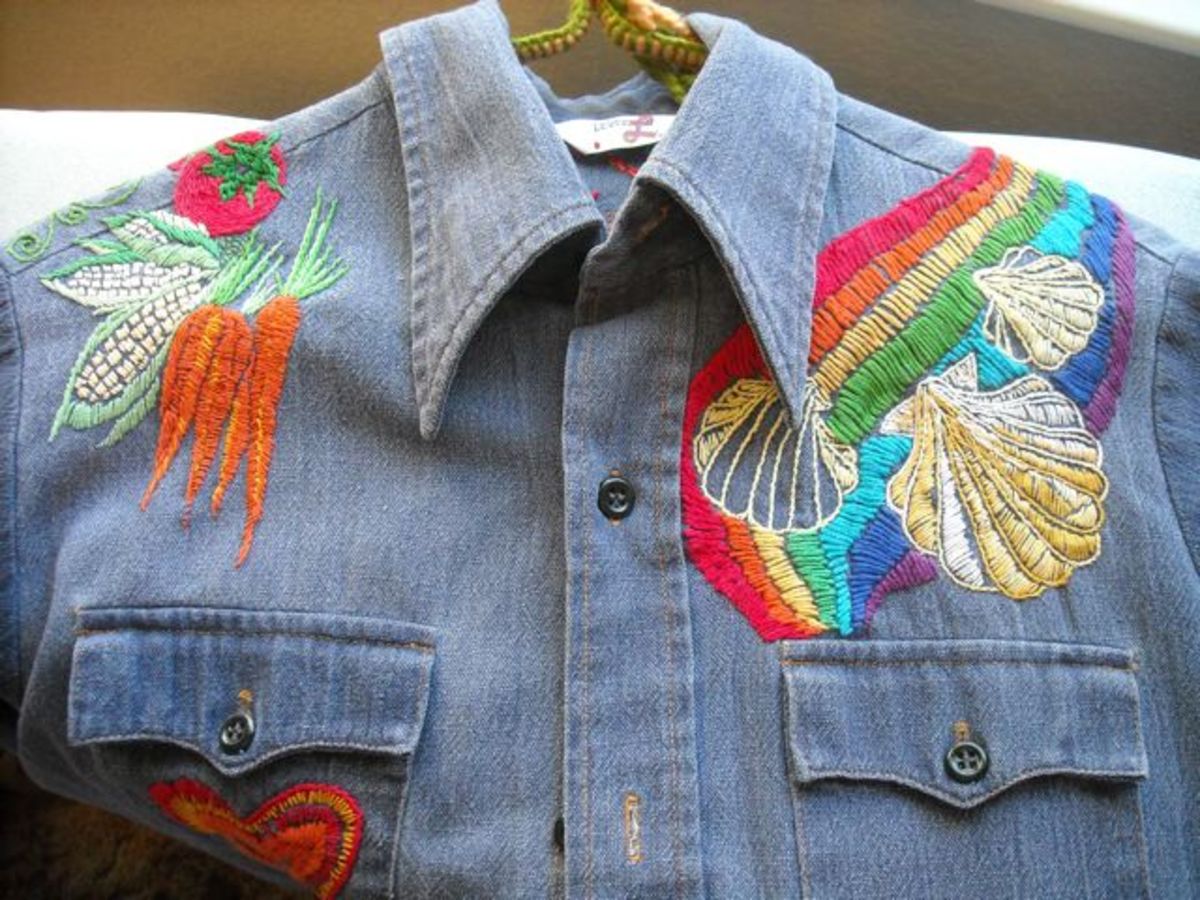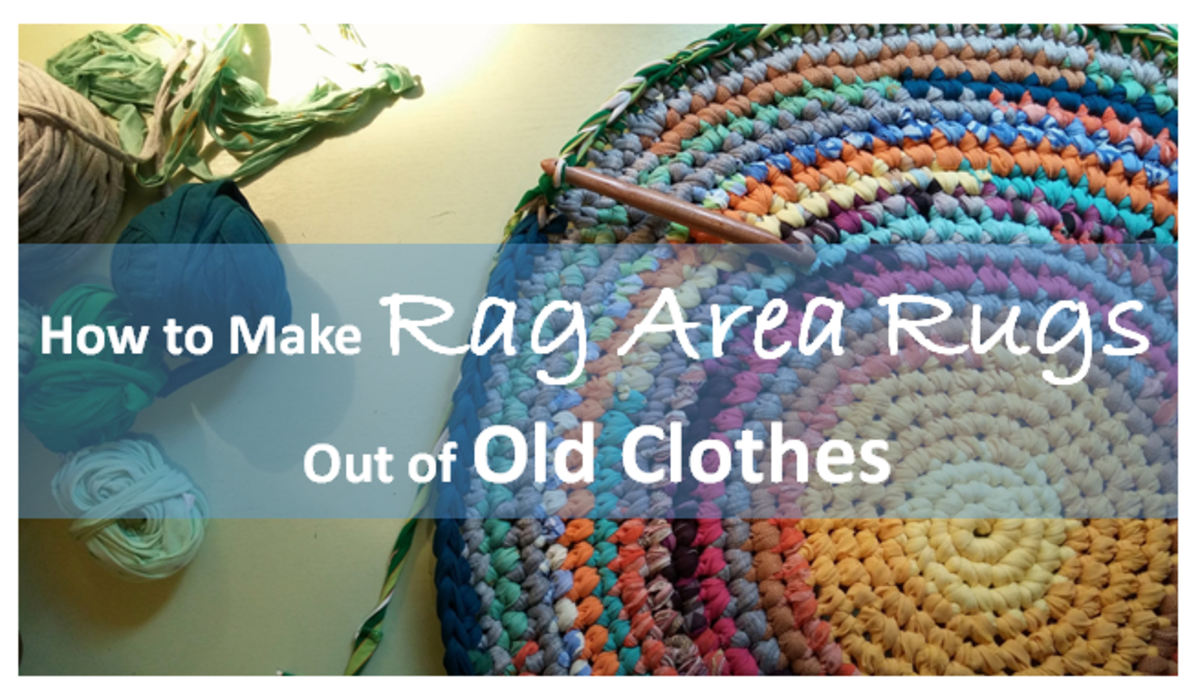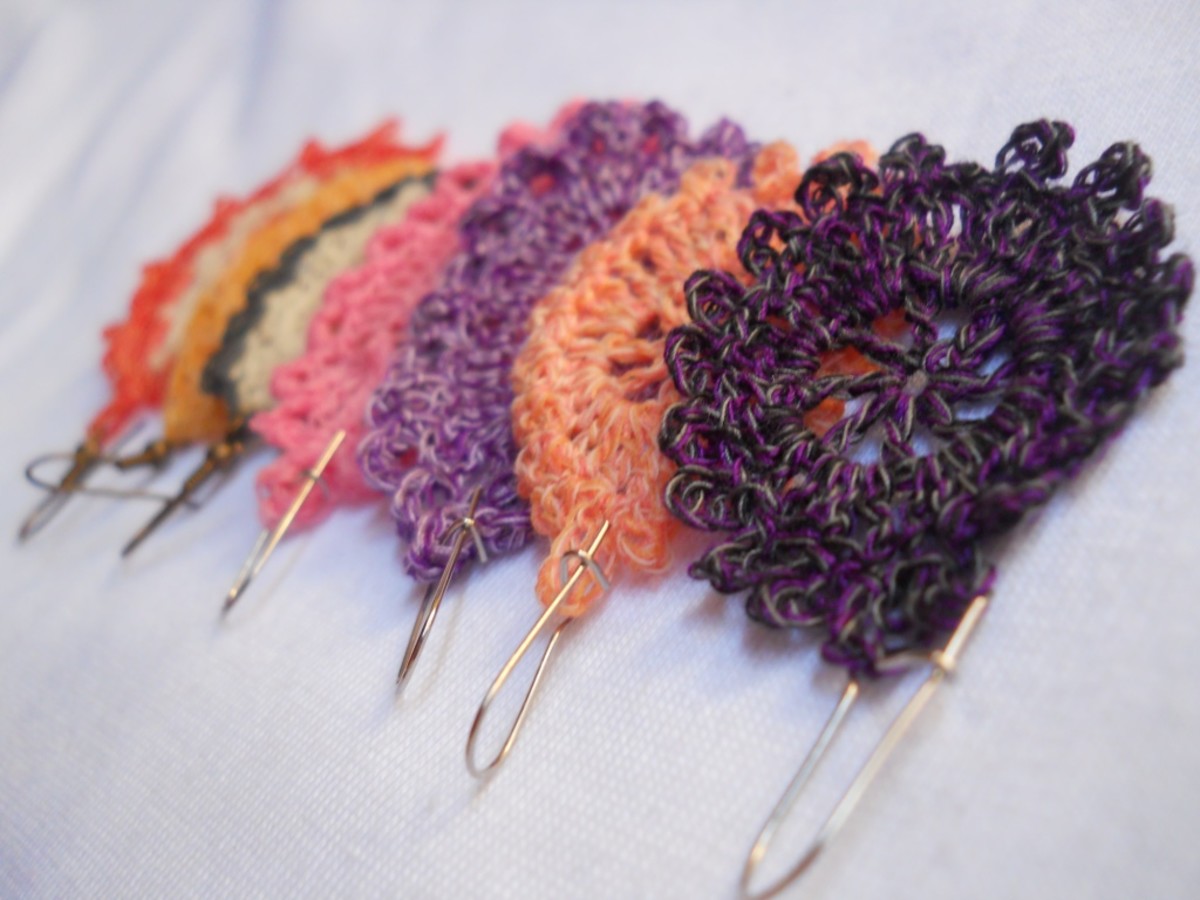All That Yarn - And Other Stuff
Tatted Star Ornament with Crystal Snowflake
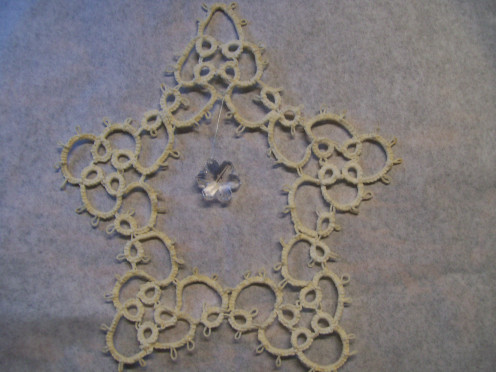
My Tatting Experiences
I have not tatted consistently, or for any length of time in many, many years. I was on a “kick” to tat for a while that involved a few patterns that I made repeatedly for gifts. I also made a lot of tatted bookmarks as they seemed to be the easiest pattern to remember and worked up quickly.
I once showed a couple of the bookmarks to a University of Wyoming professor who was teaching an education class on entrepreneurship. She liked the bookmarks and offered to sell some for me at the next craft fair she attended down in the southern half of Wyoming or the northern part of Colorado.
I made up a dozen and mailed them to her. She promised to pay me for the ones that she sold.
I never heard back from her, and no reply to my follow up letter to her requesting the return of any she had not sold.
I was out a lot of time and effort, since the materials of crochet thread and grosgrain ribbon didn’t cost all that much for each bookmark. I was mostly angry that she had absconded with my work and did not have the decency to reply or to contact me about it.
I pretty much gave up doing much tatting after that incident. I did make a couple of Christmas ornaments for family and friends, but that was over a couple of years. I made one cousin a couple of small tatted doilies for her wedding gift. It took a lot of time to make them, so I sprayed them with clear spray paint to keep them protected. That made them smell of chemicals, and I waited until the last minute to wrap them as putting them in a box only intensified the smell.
I tried picking up tatting again when I taught a class at a local Ben Franklin craft store. I had them do a simple ornament and/or a notecard decoration of tatted rings that looked like flowers. The half dozen ladies liked learning how to tat. A couple of them really wanted to learn so they could make lots of notecards to send their friends and family. I taught tatting one other time, and then there just wasn’t much interest in the community, so I could not get another class together.
Over time, my hands began to ache from tatting. It requires holding one hand with the fingers spread open, and passing the shuttle through over and under with the other hand. Not a good practice for someone with a touch of beginning arthritis. So I hung up my tatting shuttles and thread, until last year.
I was asked by a friend to help out a 12-year old girl who was interested in learning to tat. Her teacher contacted my friend, who in turn contacted me. We agreed to meet at a Guild show where the members would be doing demos of various needlework techniques. I was going to take my crochet, but instead took my tatting.
There were several people interested in what I was doing. One even had me show her (slowly) how to do it. She didn’t try it herself, but was interested in how it was done. I offered to teach anyone who wanted to learn, but no takers.
The young girl showed up with her mother, and we attempted a tatting lesson. She had seen things on YouTube, but it was not clear to her. She already knew how to knit and crochet, according to her teacher, and wanted to learn more.
I know that the hardest trick to tatting is getting the thread to “pop” where the overhand knot from the right thread pulls the left thread (making a small pop) and turns it into the overhand knot on the left thread. Not everyone can get this trick, and she struggled to do it. I tried thick cord and a larger shuttle so she could see it easier, but her long little fingers could not handle the larger thread. So I gave her my size 20 thread on a little Clover shuttle, and we tried that for a while. She had an easier time of holding it, but still could not get the “pop” in the threads. She finally had enough of trying tatting and decided to go. I gave her mother my business card in case she had questions or wanted to try again sometime. No contact from her, so either she finally got the thread to pop, or decided against tatting all together.
I even had one lady ask if I could repair a tablecloth that had tatting on it (she thought it was tatting, but she wasn’t sure), and I said I could take a look at it to see if I could help her with it. She never called me even though I gave her my card with my phone and cell numbers.
Hardanger Doily made for my Grandma
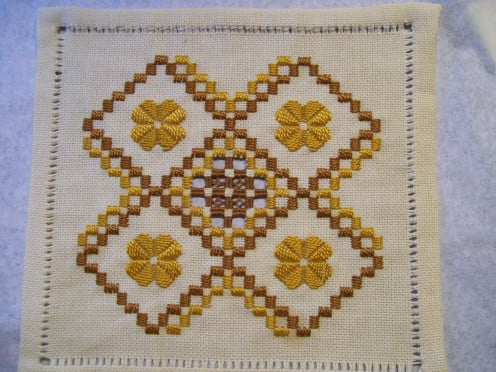
Norwegian Hardanger Embroidery
As for the Norwegian Hardanger Embroidery, I learned that during an evening “fun” class at Concordia College in Moorhead, Minnesota. Some of the college instructors’ spouses taught a few short fun classes for college students. I signed up for the Hardanger ornament one, as I had heard about Hardanger when I was on a trip in Norway. They have beautiful embroidery and beaded work on their national costume or “bunad” in the Hardanger region. I tried to get photos of one piece in a store, and asked for a pattern but they didn’t understand what I wanted from them. I did get some silver tube beads at the shop, as I knew I couldn’t find those at home.
My first Hardanger embroidery course was a short one evening class. The Hardanger ornament a small 3x3 square with red and green threads, and worked up in the two hours we had for the class. That one class hooked me on doing Hardanger embroidery. I signed up for a college class on creativity in home ec, and one of the opportunities was to do a Hardanger embroidered doily kit.
A local store called The Nordic Needle, was within walking distance of the college, and they sold Hardanger supplies. It was run by Sue and Roz (Susan L. Meier and Rosalyn K. Watnemo), who also wrote a lot of beginner and intermediate Hardanger instruction books. They put together beginner kits. For the home ec college class, the students were given a choice of color combinations for a Buttonhole Doily kit. I picked medium brown pearl cotton on ivory fabric.
After that class where we had to finish the doily to pass that part of the class, I was heavily into doing more Hardanger.
It is an easy geometric style of embroidery consisting of 5 satin stitches over 4 threads of Hardanger fabric. The stars and ships’ heads are also satin stitches, but of varying length to form the shape. Mostly it is blocks in horizontal and vertical arrangements.
I walked to the downtown shop run by Sue and Roz, and found a treasure trove of inexpensive remnant fabrics (small pieces under 1/4 yard). I picked up some threads from the clearance bin, as well as the normal colors of white and ecru, and a few 3x3 square (cheap) plastic frames.
That November and December I made a lot of small ornaments for my dorm neighbors as gifts. It was a small dorm with individual rooms, so not that many people to make presents for on a budget. They were thrilled with my little works of art.
As the time went on, I hit most of the shops within walking distance that carried Hardanger supplies. With no car at college and no public transportation, the only shops I could get to had to be close enough to walk over to from the college. I gathered a lot of colors of DMC pearl cotton #5 and #8 from various places. With my small batches of Hardanger fabric, instruction books written by Sue and Roz, I created bell pulls and more ornaments. I even made a doily in tan, brown, and gold threads for my Grandmother. She lived on a farm that mostly grew wheat, so I tried to pick colors of wheat to work on the ivory fabric.
Grandmother’s town also had one small shop that was carrying Hardanger supplies, as the trend (or fad) had caught on in her area as well. Her sister-in-law made some very nice Hardanger embroidered pieces that were framed inside a mat of rosemaling design (a type of Norwegian painting technique). Grandmother had threads and a few yards of fabric, but didn’t really have time to make much. I inherited her threads and the yards of red, green, and white fabrics that I would later make into other things.
When I joined the Casper Needle Guild, there were a couple of Hardanger stitchers. The group decided to sign up for a group correspondence course on Hardanger for beginners through EGA (Embroiderers Guild of America). We met and worked on the project at different homes. I remember the teacher (we had to mail our pieces to her) did not like the fact that my fabric was slightly skewed and the square came out more like a diamond shape. I bought a piece of 12x18” fabric that stores used to sell a lot of and it was cheap. I didn’t know it wasn’t square when I started on it.
A few years later we met and worked on a different Hardanger project from a different teacher. I decided to do a tone on tone and chose red fabric (from my Grandmother’s fabric legacy) and a red pearl cotton thread. I look at it now and wonder how my eyes didn’t cross with that much deep red color to stitch with and on.
About a year later we went with another Hardanger project that had a lot of wrapping thread techniques, but I didn’t make the entire piece like some of the group started (and few completed) I just made the required amount of samples to send the teacher for critique.
Just recently the Guild decided to do this beginning Hardanger project again since we now had a lot of new members that were interested in learning the techniques. It was the same as my red on red project but this time I chose white fabric and a blue variegated thread. Much easier on my eyes, but as I get older my eyesight is not as strong as it once was and the stitching is harder to see without taking off my glasses to work on it up close.
My Red on Red Hardanger Project (2006)
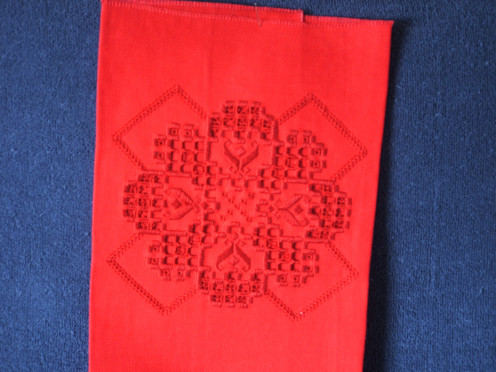
Embroidered Pillow Cases
These are two pillow cases that I had worked on over several years. The painted parts were done at my Grandmother’s house as one of our summer arts and crafts projects. I didn’t get the second pillow case done, but it had the iron on transfer on it.
When I pulled them out of the stash, I found that the painted parts were flaking off and threatening to disappear with time (and washing) so that the design might be lost.
I took out my collection of embroidery floss and got to work matching the colors the best I could with what I had on hand.
I decided to not do a completely filled in stitch design on the “plain” cases as the painted ones could not be filled in due to the stiffness of the painted areas.
I played around with stitches and came up with some hit-and-miss little stitches to fill in the open areas of the pants and the dress. You can see the detail in the totally embroidered pictures.
I also played around with the vine design, doing some leaves in satin stitch and outline stitch on the rest.
It was nice to finish this project, at least as far as I was willing to work on it. The pillows are a little different in whiteness as the painted one was used a few times and the other not until I finished embroidery on it. I have not washed them since I embroidered on them, and if I do I will pull them inside out or put them in a hosiery bag to keep the embroidery from getting snagged on something else inside the wash machine. They most definitely will be washed on the gentle cycle with only cold water, to keep the colors from running.
We used to do embroidery or painting on white cotton (flour sack) towels to use for drying dishes (when we had no dishwasher and only did dishes by hand in the kitchen sink). It was a fun way to practice our stitches and have something we could use after we finished embroidery.
We also received gifts of embroidered towels (white cotton dish towels) from older relatives in years past. It was something to do during the winter when going out to work in the garden was not a possibility. This was back in the “good old days” when TV was limited and people liked to keep busy when they sat down in the evening. Many gifts were made for birthdays, Christmas, and weddings, as well as making items to put in “hope chests” for future family usage.
Another Embroidery project (pillow cases)
Click thumbnail to view full-size




In Conclusion...More Time Would Be Nice.
I regret that over the years I had to give up a lot of my needlework as well as knitting and crocheting because of carpal tunnel from typing on a computer all day on various jobs. I know that I have so many projects and ideas (and supplies) that I want to make up, but just don’t have the ability to do it like I once did. So I have to content myself with doing a little here and there, and mostly working on afghans and scarves for charities instead.
All that yarn, all that thread and floss and fabric (not to mention pattern books), and yet so little ability to do what I’d like to do with my time. I miss my young muscles and the carefree time to play with patterns and designs. I do hope that I will be able to make a few more things before I have to find someone else who wants all my craft stuff when I can’t use it myself.
I must have known when I was a kid that my time to make things would be limited, probably because my Grandmother had arthritis and poor eyesight, and could no longer make the things she wanted to do. I would crochet and my elementary school classmates said I was “doing Granny stuff”, but I just told them I wanted to make things now (or I just ignored them) and I didn’t let them stop me. I was more of a book reader than a playground player, so I was happy to sit and crochet when others played tether ball or other sports.
More time is what everyone would like, but to use that time wisely is the hard part. I spent a lot of money on my interests over the years. I also spent a lot of time doing what I like to do, when I wasn’t working, and I have given away so much that I’m glad I started taking photos of what I have made over the years.
Whether all that yarn, thread, floss, or books, I am happy to share my experiences with others and maybe teach a little of the arts that are becoming rarities in the world.
A lot of my friends in the local Embroiderers Guild of America group also know quite a bit, so we are an untapped resource of information in search of any interested people. We had talked about teaching in the schools, but we found that teachers and teaching assistants are helping kids to learn what these adults already know such as knitting and crocheting. Getting kids interested in “granny crafts” is something that either happens or doesn’t, as kids find out and want to learn more about these arts if they are exposed to them.
Teachers are finding ways to incorporate Math and English skills in the basics of knitting or crochet. Patterns are a good way to get kids to read carefully. Also, counting to come up with the correct amount of stitches to make the pattern incorporates some math skills. Knitting or crochet also help with focus and concentration skills which in turn help kids with school work in general.
Computers may be able to reproduce items in 3-D printers, but the satisfaction of making something yourself is still the lure for so many crafters and artists. I hope you have enjoyed reading about my interests in my all that yarn blogs.
